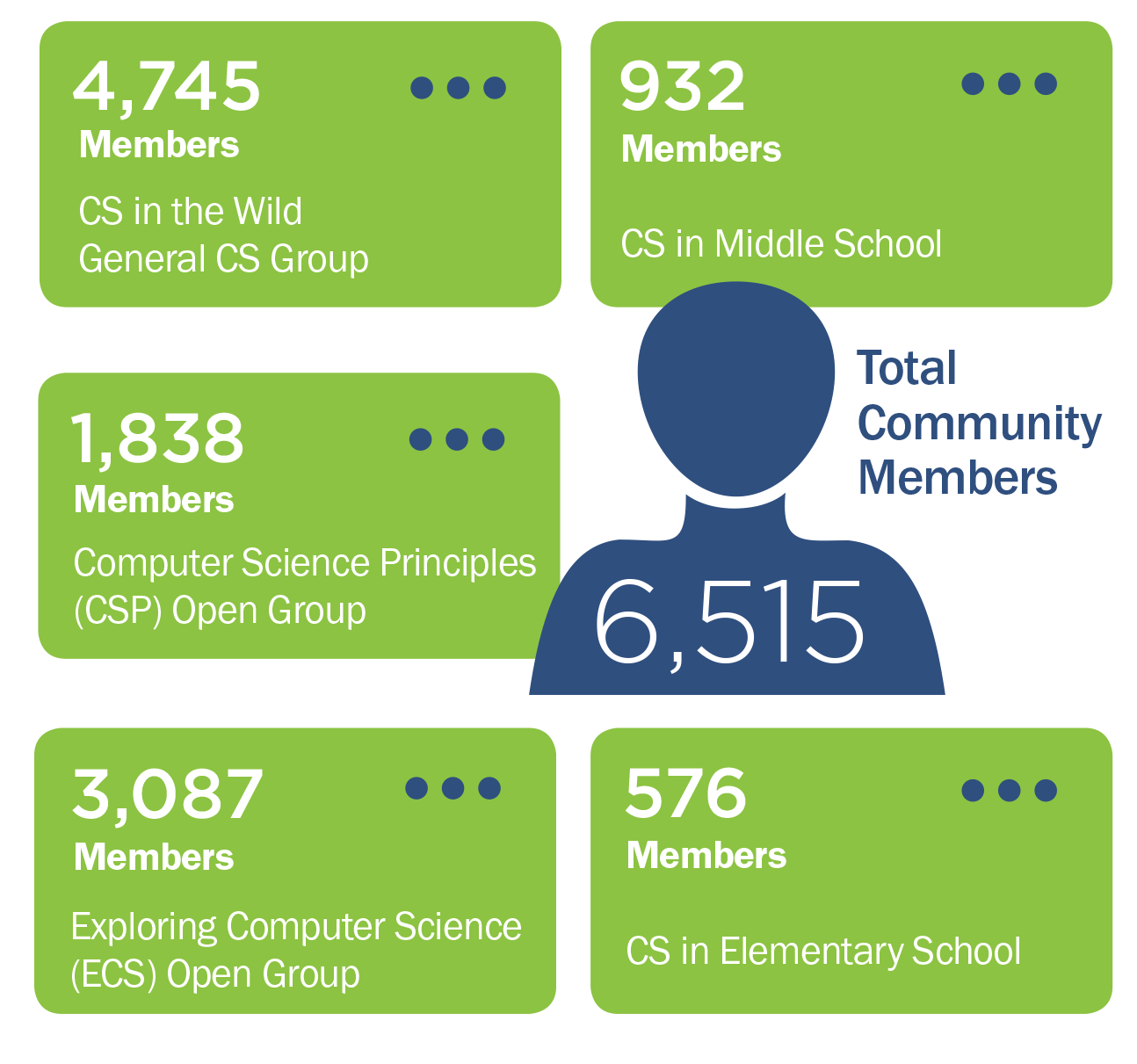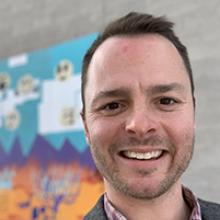Three Strategies for Preparing Teachers of Computer Science
Computer science education is increasingly recognized as vital to student success. Spurred by the inclusion of computer science as a core subject in the Every Student Succeeds Act, and by the Computer Science for All (CS for All) initiative, many states and districts are rapidly expanding K–12 computer science instruction.
The federal Computer Science for All (CS for All) initiative aims to accelerate decades-long efforts to move computer science into the classroom. This initiative recognizes that all students, at every grade level, should be provided with rigorous and engaging instruction in computer science and computational thinking.
But staffing classrooms with high-quality teachers is a challenge. K-12 teachers have limited pathways to become certified computer science teachers, as detailed in testimony before the Ohio Senate. Most teachers are recruited from other content areas. They receive minimal professional development to smooth the transition or deepen their knowledge beyond the novice level. Systems that support teacher learning and growth, such as teacher preparation programs, certification and licensure, and professional development, are still in their infancy for computer science.
Teachers are the number-one school factor in student learning, so preparing and supporting high-quality teachers of computer science is critical. AIR is working with states, districts, and teachers to implement and test three promising strategies to strengthen teacher preparation and development:
Virtual Communities Connect, Cultivate, and Challenge Teachers
In virtual communities, people can connect with content, resources, peers, and experts around common interests and ideas. In the education field, AIR studies virtual communities to develop evidence-based practices for designing, implementing, and supporting online engagement and learning.
AIR’s CS for All Teachers is a vibrant virtual community of practice for all teachers from preK through high school who are interested in teaching computer science. The research-based community is a free, online home for teachers to connect, learn new instructional strategies, attend virtual events, and access more than 1,100 crowdsourced resources. Virtual group space allows teachers to participate in interest-based discussions and forums. CS for All Teachers began as a space for high school teachers, but it has expanded to elementary and middle school teachers, who often venture into computer science as a way to integrate computational thinking into traditional content areas.
 Teachers are not on their own in this community. A team of expert facilitators and computing professionals guide teachers’ learning. AIR provides leadership training for cohorts of teacher leaders to become community ambassadors who cultivate and challenge their peers. These community ambassadors help AIR staff generate ideas for webinars, Twitter chats, curated resource collections, blogs, and online discussions.
Teachers are not on their own in this community. A team of expert facilitators and computing professionals guide teachers’ learning. AIR provides leadership training for cohorts of teacher leaders to become community ambassadors who cultivate and challenge their peers. These community ambassadors help AIR staff generate ideas for webinars, Twitter chats, curated resource collections, blogs, and online discussions.
Jennifer Vermillion, a mid-career teacher in Virginia, found a “safe place” in CS for All Teachers when she learned she had to teach a year-long, honors-level computer science course. She began as a complete novice to computer science, gaining confidence as she asked questions and discovered quality resources and ideas through CS for All Teachers to enrich her practice. She’s now a community ambassador—and she no longer feels like an “imposter” teacher of computer science. In fact, her students are thriving, and some have won national computer science competitions. She has expanded computer science learning opportunities for younger students in her school and community as well.
“Jennifer is the quintessential teacher leader,” says Melissa Rasberry, senior education consultant at AIR. “She saw a need to further her learning and took it upon herself to seek out resources to improve her practice. As a result, her students now benefit from the wisdom she gathers from more than 6,500 of her colleagues in the CS for All Teachers community.”
Micro-credentials Personalize Professional Development
Micro-credentials are an innovative alternative to traditional one-size-fits-all, “sit and get” workshop-style professional development activities, which are proving to be ineffective in changing teaching practice and which most teachers don’t want anymore, according to research conducted by AIR for the U.S. Department of Education and by the Bill & Melinda Gates Foundation and the National Comprehensive Center for Teacher Quality.
- Melissa Rasberry
This approach allows teachers to learn and demonstrate competency in discrete skills, receive feedback from an outside evaluator, and earn recognition for mastery, known as a micro-credential. Some micro-credentialing organizations award teachers with a digital or physical badge that they can share publicly and with employers. Teachers can earn a micro-credential for a single skillset, or multiple ones from a “stack” of related micro-credentials, giving teachers opportunities to highlight specific competencies that wouldn’t otherwise be professionally recognized.
Research-based micro-credentials focus on active, job-embedded, sustained learning that is relevant to teachers’ classroom practices. Teachers develop and demonstrate competencies in the course of lesson planning, instructional delivery, reflection, and a portfolio of evidence, such as student work, learning data, interviews of students, and short videos of teaching practice. To earn a micro-credential, teachers submit their portfolios to trained, independent evaluators, who use a rubric to review the evidence and provide teachers with feedback. The organization that issues the micro-credential then determines whether to award it.
AIR has developed micro-credentials for teachers of computer science now available on BloomBoard’s platform, and in collaboration with states like Wyoming, which was awarded a federal Perkins grant to strengthen computer science across the state. AIR’s micro-credentials are based on the K-12 Computer Science Framework, which outlines foundational computer science concepts and computational thinking practices.
“Micro-credentials present a personalized option for professional development, allowing teachers to ‘pick their own adventure’ for their needs and interests, aligned with their school or district priorities,” says Joseph P. Wilson, senior education technical assistance consultant at AIR. “Teachers can build on a lesson they’ve delivered, select a computer science topic, and redesign that lesson to more intentionally incorporate a computational thinking practice, such as using algorithms or abstraction.”
“We’re also learning from our research that a micro-credential can’t be stand-alone professional development,” Rasberry says. “Teachers still need support, whether virtually or in-person, to persist and complete micro-credentials. They also value incentives, such as compensation and credit toward recertification requirements.”
Researcher-Practitioner Partnerships: A New Way to Develop Teachers’ Skills
Researcher-practitioner partnerships are an emerging approach to professional development in which researchers and educators work as equal partners on complex and persistent problems of practice.
AIR supports researcher-practitioner partnerships that adhere to the promising, research-based networked improvement communities model. Researchers and teachers carry out Plan-Do-Study-Act cycles of improvement, using iterative, rapid-cycle testing of instructional routines. They meet regularly to determine root causes of a problem, pick a factor on which to focus, try out an intervention that might make a difference, and review data and observations to understand strengths and weaknesses of the intervention. Then they decide whether to adjust their strategy or try a new one, going through this process repeatedly.
“AIR’s first researcher-practitioner partnership in computer science focuses on bringing computational thinking into elementary school classrooms, primarily in math and science instruction,” Wilson says. AIR researchers, Michigan State University researchers, and staff at Oakland Schools, a regional service agency in Michigan, have been collaborating for several years with teachers in several schools in the region.
It’s an “incredibly collaborative space,” Rasberry says. “Computers scientists say, ‘This content is really important.’ Social scientists say, ‘This content needs to be is equitable, rigorous, and sustainable to implement.’ Teachers say, ‘I see that this is important, but we need time and resources to understand this.’ Everyone puts on their construction hats and says, ‘Let’s try this.’” The partnerships bring together diverse groups of people, in terms of personal and professional identity, to understand what works, to what extent, and for whom, in local contexts. AIR’s work will contribute to the nascent evidence of the effectiveness of researcher-practitioner partnerships.
The Future of Computer Science Education
CSforALL is a central resource for individuals and organizations interested in K–12 computer science education. Videos of featured speakers from annual summits are available on the CSforALL website.
In the future, Rasberry and Wilson say they expect to see more efforts to support professional preparation and ongoing learning for teachers of computer science. For states and districts, this means building formal systems and processes—higher education programs, requirements for teacher licensure and recertification, professional development, revised standards, and standardized assessments. Additionally, it will be important to provide equitable access to high-quality instruction.
“There’s a big question in the field,” Wilson says. “What specific content should students learn at each level? A framework and standards exist now, but the field is changing by the second. We’re already seeing a big push to move toward learning more about so many more topics, like artificial intelligence and ethics of computer science.
“Standardized assessment is another big issue,” Wilson adds. “How do states and districts assess computer science knowledge and skills beyond formative assessments, in a way that is valid and reliable? This doesn’t exist yet. Assessment is going to be very hard. Will we measure students’ thought processes? End products of a specific context or concept? Is the interest in creating more computer scientists, or a technology-literate population? States will have to come to terms with these questions.”
To make CS for All a reality, schools, districts, states, and national entities must work together to build a strong ecosystem for computer science education. “We have built a great foundation,” Rasberry notes. “The momentum in the computer science movement is building and the demand is clear. Now we must get all stakeholders on board to help build a cohesive preK-12 pipeline with a cadre of teachers prepared to teach students the computer science and computational thinking skills they need for success in the 21st century economy.”

